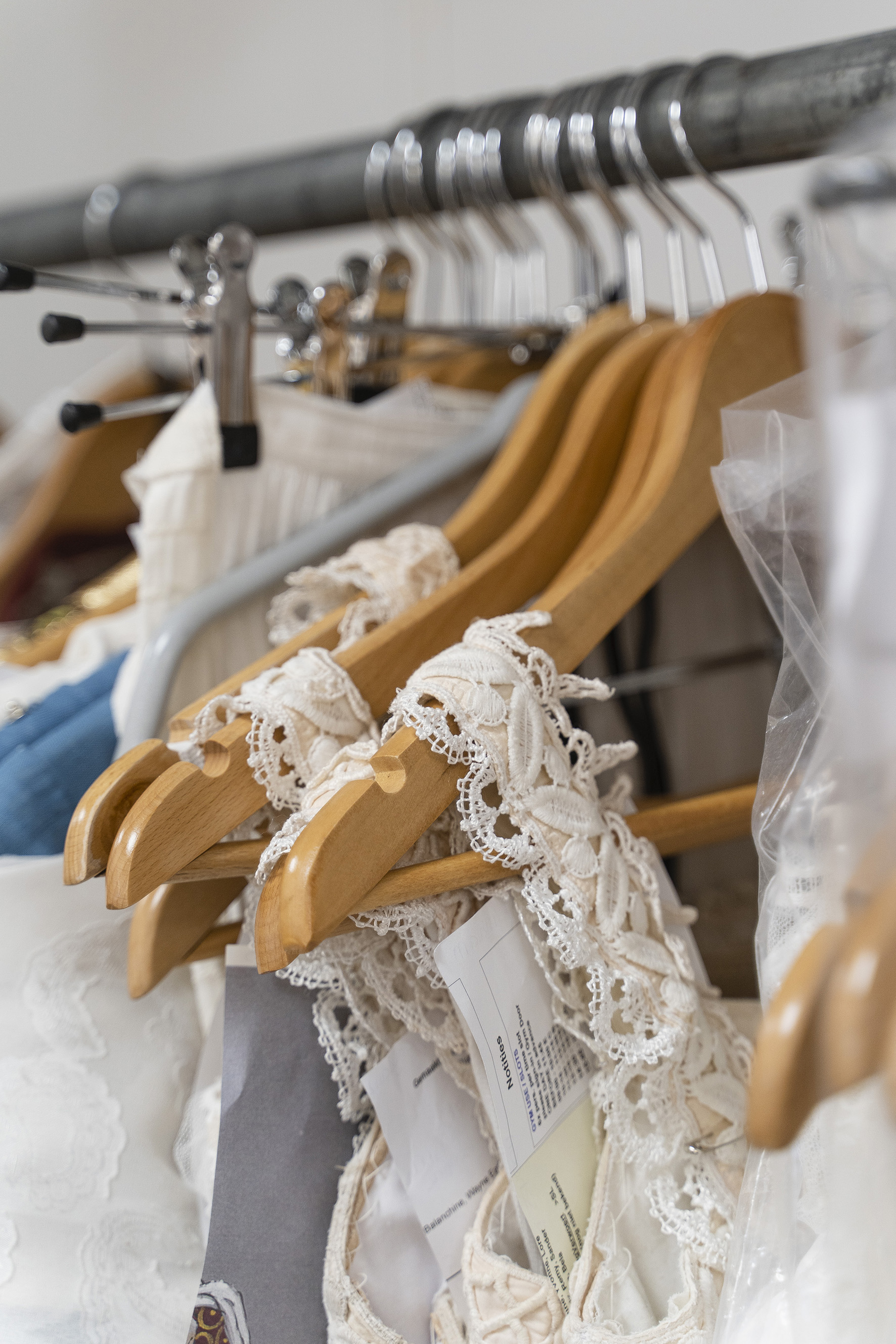
The craft of theatre: The dressers
Although productions often seem magical, they are not simply conjured out of a top hat. Behind the scenes, every person in every department makes an important contribution – be it lights, costumes or scenery. Who does what, and what does the creation process look like for them? We ask first dresser Sandra Bloos and dresser Regien Lemmens, both members of Dutch National Opera’s Dressers’ Department, what they do.
Text: Yves Goudriaan
In the dressers’ workshop on the fourth floor, Sandra is busy relocating clothing racks, but she immediately invites me to join her on her way to a rehearsal of Blue. With racks and all, we step out of the lift on the ground floor and arrive at the dressers’ room. The space is very conveniently located, right next door to the main stage. Brimming with infectious enthusiasm, Sandra starts talking about her job: “I mainly dress the female opera soloists, but our team of four dressers actually does everything together. So, sometimes I also help to dress members of the Chorus of Dutch National Opera. Soloists are occasionally tense, because the way we work and the dressers are new to them. Since singers need to focus on their performance, our job is to ensure that everything is as streamlined as possible.”
‘Ok, go ahead!’
Getting dressed is not an obvious process for everyone. Sandra: “Some singers say, ‘OK, go ahead!’ Then they stand stock-still and expect us to undress and dress them from start to finish. Luckily, after they’ve experienced the process once, they know that they have to help out too. And every soloist has their own rituals; for instance, something has to be laid out in a certain manner, or they have to drink a glass of water or a cup of tea. We always do everything in the same way for them; it gives them a sense of calm.”

Blood is blood, right?
These aren’t the only challenges dressers face. Another is cleaning fake blood from costumes. Grinning, Sandra shows a picture of a white dress from the opera Salome that is completely covered in blood: “Mercifully, this was replaced by a new dress, but normally all the blood has to be washed out after each performance.” Regien, a dresser who’s joined the conversation, adds, “Fake blood is tested beforehand to see how it reacts on the material. Still, sometimes the consistency changes, which then has a very different effect on the costume. Then they say, ‘Blood is blood, right?’ But unfortunately, it doesn’t work like that here...”
It is also a very physically demanding job, according to Sandra. “People often don’t realise that. Sometimes you have to drag as many as 10 clothing racks, laden with heavy costumes.” Regien: “And sometimes you have to carry coats weighing about eight kilos, like bulky, heavy soldiers’ coats for the Chorus. There are about 35 of them, so your shoulders and elbows get quite sore.”
Positive snowball effect
Despite these challenges, Sandra and Regien speak very passionately about their work, and they demand a lot of themselves. Regien: “If we set the bar high, the costume looks good and it’s neatly ironed, the singers also set the bar high.” Sandra adds, “And likewise, we feel a great responsibility for the final product. It’s about having respect for other departments, such as the workshops, because you know how many hours they put into a costume. So there really is a positive snowball effect!”